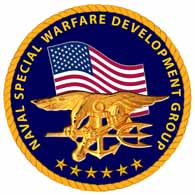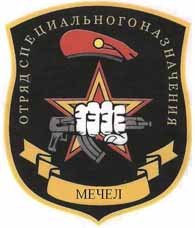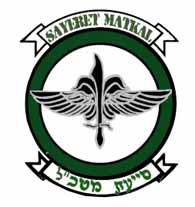Spotlight on U.S. Navy SEALS and Other Special Operations Teams Around the World
U.S. Navy SEALs are not exactly a “secret” organization. This elite unit has been the subject of movies, video games and numerous books. But the unit’s extremely high profile raid into Pakistan, which resulted in the death of Osama bin Laden, leader and founder of al-Qaeda, put the men of “SEAL Team Six” in the media spotlight – even if it wasn’t technically SEAL Team Six.
Ironically, despite all of this attention, the history of the Navy SEALs isn’t well known. The unit’s origins date back to World War II, when the United States Navy realized that it required soldiers to do amphibious reconnaissance prior to a beach landing. This was to note obstacles and defenses and to determine the best locations for landing craft.
In 1942 the Navy, working jointly with the United States Army, established the Amphibious Scout and Raider School at Fort Pierce, Florida. Originally the unit called upon experienced combat swimmers and trained them in explosive ordnance disposal. This Naval Combat Demolition Unit first saw action in Operation Torch during the Allied invasion of North Africa in 1942.
{default}The unit became the SEALs (SEa, Air and Land) under President John F. Kennedy, who announced his intention to strengthen U.S. special operations forces. The result was that the SEALs would be trained in the art of guerrilla and counter-guerrilla warfare, and unconventional operations including hand-to-hand combat, high-altitude parachuting, demolitions and even foreign language proficiency.
Originally, there were two SEAL teams, one for each coast, with Team One being stationed at Naval Amphibious Base Coronado in San Diego, and Team Two at Naval Amphibious Base Little Creek in Virginia Beach. The number of SEAL teams has increased, but there is some confusion about SEAL Team Six.
 This highly elite group is still known informally as SEAL Team Six (ST6), but is actually officially The United States Naval Special Warfare Development Group (NSWDG), and whose sole role is counter terrorism.
This highly elite group is still known informally as SEAL Team Six (ST6), but is actually officially The United States Naval Special Warfare Development Group (NSWDG), and whose sole role is counter terrorism.
It was founded by Richard Marcinko, one of the Navy representatives on the Joint Chiefs of Staff task force Terrorist Action Team (TAT). After the failed 1980 rescue mission at the U.S. Embassy in Iran (known as Operation Eagle Claw), TAT was charged with developing a full-time counter-terrorism team, which Marcinko was called in to design and lead.
Marcinko reportedly named the group Team Six when it became operational in 1981 as a ruse to confuse Soviet intelligence as to the number of SEAL Teams in operation. The unit was actually dissolved in 1987 as the new NSWDG was formed, yet the moniker of SEAL Team Six remains.
The original SEAL Team Six took part in the October 1983 invasion of Grenada, known as Operation Urgent Fury, and as NSWDG took part in NATO operations in Bosnia, and more recently in Operation Enduring Freedom in Afghanistan. But it is no doubt Operation Neptune’s Spear, which saw the death of Osama bin Laden, that will likely go down as a true moment of glory for NSWDG, aka SEAL Team Six.
In addition to the SEALs, there are several other high profile special operations teams around the world that can be considered the elite of the elite. And while they may be high profile in their operations after the fact, due to the secrecy of their training and the nature of the world of black ops, these could also be considered very low profile groups as well.
The Special Air Service (SAS) of Great Britain
 When your unit’s motto is “Who Dares Wins” you probably know there is something “special” about this group of “Special Forces.” The Special Air Service can trace its origins back to World War II, when it was formed as the Special Air Service Brigade. It began as a commando force with just five officers and 60 other ranks (enlisted men), operating behind the lines in the North African Campaign (1941-43). It was formally deactivated in October 1945 with the end of the war. However, the British Government decided there was a need for a Special Forces component in the Territorial Army (Britain’s equivalent to the U. S. National Guard) and created the modern SAS in January of 1947. It essentially took over the position of the volunteer regiment, the Artists Rifles as 21 SAS Regiment. It was joined by 22 SAS Regiment in 1953. A number of British Commonwealth states created their own versions of the SAS, including the Australian Special Air Service Regiment, the New Zealand Special Air Service and the Rhodesian Special Air Service.
When your unit’s motto is “Who Dares Wins” you probably know there is something “special” about this group of “Special Forces.” The Special Air Service can trace its origins back to World War II, when it was formed as the Special Air Service Brigade. It began as a commando force with just five officers and 60 other ranks (enlisted men), operating behind the lines in the North African Campaign (1941-43). It was formally deactivated in October 1945 with the end of the war. However, the British Government decided there was a need for a Special Forces component in the Territorial Army (Britain’s equivalent to the U. S. National Guard) and created the modern SAS in January of 1947. It essentially took over the position of the volunteer regiment, the Artists Rifles as 21 SAS Regiment. It was joined by 22 SAS Regiment in 1953. A number of British Commonwealth states created their own versions of the SAS, including the Australian Special Air Service Regiment, the New Zealand Special Air Service and the Rhodesian Special Air Service.
The British SAS saw action in Aden, in the Northern Irish Troubles, Falkland Islands in 1982, 1991 Gulf War, in Bosnia with NATO and more recently in Afghanistan and Iraq. But it is the 1980 Iranian Embassy Siege in London, which saw the elite team storm the embassy after Iranian Arab separatists took hostages that put the SAS in the news. Five of six militants were killed and 19 hostages were saved, without the loss of a single SAS soldier.
1st Special Forces Operational Detachment-Delta (Delta Force) of the United States
 Much like U.S. Navy SEALs, the history and organization of Delta Force is confused thanks to movies and video games. The unit was formed as a result of several well-publicized terrorist-related events in the 1970s. Today Delta Force is part of the Joint Special Forces Operational Command, with the NSWDG/SEAL Team Six charged for maritime incidents and Delta Force handing land-based operations.
Much like U.S. Navy SEALs, the history and organization of Delta Force is confused thanks to movies and video games. The unit was formed as a result of several well-publicized terrorist-related events in the 1970s. Today Delta Force is part of the Joint Special Forces Operational Command, with the NSWDG/SEAL Team Six charged for maritime incidents and Delta Force handing land-based operations.
Much of what Delta Force may have done – or may not have done – remains somewhat shrouded in mystery and myth. There are reports that Delta Force snipers may have helped kill Colombian drug lord Pablo Escobar. It is known that Delta Force helped track SCUD Missiles during Operation Desert Storm, and has been involved in offensive operations against the Taliban in Afghanistan, and in the Battle of Fallujah in Iraq in 2004. The unit is most famous today for its role in 1993’s Operation Gothic Serpent in Mogadishu, Somalia, which was chronicled in the book and movie Black Hawk Down.
United States Army Rangers (Rangers)
 This elite unit, which is also well known thanks to Black Hawk Down, as well as Saving Private Ryan, actually can trace its origins back to colonial times. Ranger forces, which consisted of American volunteers, served alongside the British forces in the French and Indian Wars (famously, “Rogers’ Rangers), and later against their former British allies in the American Revolution. Groups of “Rangers” also took part in the American Civil War – this time fighting for the Confederate States Army.
This elite unit, which is also well known thanks to Black Hawk Down, as well as Saving Private Ryan, actually can trace its origins back to colonial times. Ranger forces, which consisted of American volunteers, served alongside the British forces in the French and Indian Wars (famously, “Rogers’ Rangers), and later against their former British allies in the American Revolution. Groups of “Rangers” also took part in the American Civil War – this time fighting for the Confederate States Army.
Those early Rangers used unorthodox tactics, carried out intelligence gathering functions and operated behind enemy lines.
Thus, during World War II when it came time for the United States Army to develop its own modern Special Forces, it revived the “Ranger” name. Rangers saw action in North Africa and Italy and of course in the D-Day invasion at Normandy. Additional Ranger units also took part in the Pacific, such as Merrill’s Marauders in Burma and the 6th Ranger Battalion which accomplished the Cabanatuan Raid in the Philippines that liberated hundreds of Allied POWs held by the Japanese.
Rangers took part in operations in Korea and Vietnam, as well as in the 1991 Gulf War and in the 2003 invasion of Iraq. Rangers also were among the first U.S. forces on Afghan soil during Operation Enduring Freedom in 2001, but it is the 1993 operation in Somalia that arguably is the unit’s most widely known modern action.
That operation took place October 3-4, 1993 and is known as the Day of the Rangers, or the First Battle of Mogadishu. The operation, which called on Task Force Ranger (made up of the U.S. Army Rangers, Delta Force, 160th Special Operations Aviation Regiment and operators from the Navy SEALs, SEAL Team Six and even Air Force Pararescue/Air Force Combat Controllers), was charged with capturing leaders of the HabrGidr clan.
Two U.S. Black Hawk helicopters were shot down, and it took nearly a day of fighting for those U.S. soldiers trapped at the crash site to be rescued. 19 American soldiers were killed and 73 wounded, making it the bloodiest single combat action at the time since the Vietnam War.
GSG-9 of Germany
 This Special Forces unit is unique in that it is not part of the Germany military, but rather is a branch of the German Federal Police. It was created following the 1972 terrorist attack on the Summer Olympics in Munich by the Palestinian group Black September.
This Special Forces unit is unique in that it is not part of the Germany military, but rather is a branch of the German Federal Police. It was created following the 1972 terrorist attack on the Summer Olympics in Munich by the Palestinian group Black September.
West Germany’s military and police were utterly unprepared to respond to the 1972 crisis, which ended in the death of one policeman, five of the eight kidnappers and nine hostages (two had previously been kidnapped). It was determined in West Germany that the nation needed to be able to respond to future terrorist threats. With fears that such a special operations group in Germany might rekindle memories of the Waffen SS, it was decided that the unit would fall under the arm of the police rather than the military. Only one in five of those who apply for GSG-9 pass the training course.
GSG-9, as with many special operations and anti-terrorist teams, keeps an extremely low profile, so many of its operations are likely classified. However, its track record of known operations is quite impressive, including the 1977 rescue of 86 hostages from Lufthansa Flight 181. The team has reportedly been involved in more than 1500 missions, but has only fired shots in five events.
Special Purpose Forces (Spetsnaz GRU) of Russia
 While the Russians typically call any Special Forces “Spetsnaz” (“forces of special training”), the unit today is somewhat infamous in Russia. Officially it is Spetsnaz GRU, and are units of the Armed Forces of the Russian Federation, but it actually – much like the Rangers or SAS – has its origins in World War II.
While the Russians typically call any Special Forces “Spetsnaz” (“forces of special training”), the unit today is somewhat infamous in Russia. Officially it is Spetsnaz GRU, and are units of the Armed Forces of the Russian Federation, but it actually – much like the Rangers or SAS – has its origins in World War II.
The Special Purpose Forces operated in World War II as reconnaissance and diversionary units. After the war the Soviet Union’s Red Army saw that the NATO forces were developing Special Forces and thus created Spetsnaz GRU, originally trained to operate behind the lines and take part in demolitions and other guerilla and counter-guerilla activities
The GRU served in the Soviet War in Afghanistan, in the Chechen Wars and most recently in the 2008 South Ossetia War. However, the role of the Spetsnaz GRU has transitioned to include a counter-terrorism role, much like the Delta Force or SAS.
SayeretMatkal of Israel
 The Israeli Defense Forces (IDF) essentially expect every man and woman to be a frontline soldier, and all able bodied adults are required to serve. The IDF is considered one of the best trained in the world, and has many special units.
The Israeli Defense Forces (IDF) essentially expect every man and woman to be a frontline soldier, and all able bodied adults are required to serve. The IDF is considered one of the best trained in the world, and has many special units.
The SayeretMatkal stands out as being modeled after the British SAS – and even shares the motto “Who Dares Wins.” Its primary role is hostage rescue missions outside Israel’s borders. Until recently the Israeli Army had an official policy to deny the existence of the unit, and operations were typically attributed to “elite paratroopers.”
It was created in 1957, and while the role of hostage rescue remains its primary purpose, it has reportedly been used in kidnapping of enemy intelligence officers and in sabotage missions. Its most famous mission was the 1976 “Raid on Entebbe,” which saw the rescue of more than 100 Air France airline passengers who had been hijacked by Palestine Liberation Organization (PLO) militants and flown to the capital of Uganda. In total 52 enemy combatants were killed in the raid, with the loss of only three hostages and the assault element’s commander Yonatan Netanyahu.


THANK YOU!!!!!!!!!!!
Whatever your team number, whatever your names are….
All that matters is YOU GUYS MADE IT! I am in awe of your Courage,Bravery and Dedication! I pray for all of you guys out in the sh*t. Keep your powder dry, beens warm and beer cold Brothers! Truly, THANK YOU FROM THE BOTTOM OF my ‘old air cav’ HEART! AAAAEEIYAAAAHHH!!!!!! GODSPEED,GOD BLESS
P.S.- what’s happening with the sharks and other sea creatures in the Arabian ocean, heard a bunch are sick with food poisening type symptoms? Live it, learn it, love it! 😉